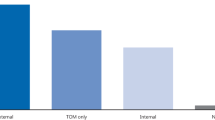Abstract
As life becomes more digitally oriented, we need to emphasize cybersecurity and its awareness. Particularly in industries such as medicine and business that contain sensitive information, like social security numbers or payment information, which if stolen can result in identity theft. With the right security measures in place, we can maintain a new standard of data privacy as the response to data breaches becomes more efficient. This paper aims to analyze two datasets to compare and recognize any ongoing data breach trends from 2005 to 2019 and from 2009 to 2022. After identifying these trends, we will determine whether these cybersecurity threats are mostly due to human error or if the organizations targeted most have weaker cybersecurity systems. Through our analysis, we found that the business sector loses thirty-nine times more records than medical, however medical is targeted significantly more. Whereas in business the top type of attack is usually hacking or malware, most medical breaches are either unintended disclosures or physical loss which is why fewer records are compromised. With deliberation, we conclude that human error is an element in the majority of large-scale breaches, as well as pointing out the necessity for stronger cybersecurity systems and teams.
Access this chapter
Tax calculation will be finalised at checkout
Purchases are for personal use only
Similar content being viewed by others
References
Advisen (2020) Insurance data, media, and technology. Advisen Ltd. https://www.advisenltd.com/. Accessed 18 Dec 2022
What are the penalties for violating HIPAA? Penalties for Violating HIPAA | American Dental Association. https://www.ada.org/resources/practice/legal-and-regulatory/hipaa/penalties-for-violating-hipaa. Accessed 18 Dec 2022
Cremer F et al (2022) Cyber risk and cybersecurity: a systematic review of data availability. Geneva Pap Risk Insur - Issues Pract 47(3). https://doi.org/10.1057/s41288-022-00266-6
Ou CX, Zhang X, Angelopoulos S, Davison RM, Janse N (2022) Security breaches and organization response strategy: exploring consumers’ threat and coping appraisals. Int J Inf Manage 65:102498. https://doi.org/10.1016/j.ijinfomgt.2022.102498
Yeo LH, Banfield J (2022) Human factors in electronic health records cybersecurity breach: an exploratory analysis. 19(Spring):1i
Seh AH et al (2020) Healthcare data breaches: insights and implications. Healthcare 8(2):133. https://doi.org/10.3390/healthcare8020133
Javaid DM, Haleem A, Singh DRP, Suman DR (2023) Towards insighting cybersecurity for healthcare domains: a comprehensive review of recent practices and trends. Cyber Secur Appl 1:100016. https://doi.org/10.1016/j.csa.2023.100016
Abbiati G, Ranise S, Schizzerotto A, Siena A (2021) Merging datasets of cybersecurity incidents for fun and insight. Front Big Data 3. https://doi.org/10.3389/fdata.2020.521132
IBM - United States. https://www.ibm.com/downloads/cas/3R8N1DZJ. Accessed 15 Dec 2022
Seh AH, Zarour M, Alenezi M, Sarkar AK, Agrawal A, Kumar R, Ahmad Khan R (2020) Healthcare data breaches: insights and implications. Healthcare 8(2):133. https://doi.org/10.3390/healthcare8020133
Population estimate for 2021. Rank List: States in Profile. https://www.statsamerica.org/sip/rank_list.aspx?rank_label=pop1. Accessed 18 Dec 2022
Trautman LJ, Ormerod PC (2017) Corporate directors’ and officers’ cybersecurity standard of care: the Yahoo data breach. Am Univ Law Rev 66(5):3. https://digitalcommons.wcl.american.edu/aulr/vol66/iss5/3
Wang P, Park S (2017) Communication in cybersecurity: a public communication model for business data breach incident handling. Issues Inf Syst 18(2):136–147. https://doi.org/10.48009/2_iis_2017_136-147
McCandless D (2022) World’s biggest data breaches & hacks. Information is Beautiful. https://www.informationisbeautiful.net/visualizations/worlds-biggest-data-breaches-hacks/. Accessed 14 Dec 2022
River City Media. https://privacyrights.org/data-breaches/river-city-media. Accessed 14 Dec 2022
Fair L (2021) Latest FTC notice of penalty offenses tells 700+ national advertisers that deceptive endorsements can lead to financial penalties. Federal Trade Commission. https://www.ftc.gov/business-guidance/blog/2021/10/latest-ftc-notice-penalty-offenses-tells-700-national-advertisers-deceptive-endorsements-can-lead. Accessed 18 Dec 2022
Argaw ST, Bempong N-E, Eshaya-Chauvin B, Flahault A (2019) The state of research on cyberattacks against hospitals and available best practice recommendations: a scoping review. BMC Med Inform Decis Mak 19(1). https://doi.org/10.1186/s12911-018-0724-5
Mohammed Z (2021) Data breach recovery areas: an exploration of organization’s recovery strategies for surviving data breaches. Organ Cybersecur J: Pract, Process People 2(1):41–59. https://doi.org/10.1108/ocj-05-2021-0014
2022 data breach investigations report. Verizon Business. https://www.verizon.com/business/resources/reports/dbir/. Accessed 18 Dec 2022
Chakraborty S, Kumar P, Sinha DB (2019) A study on DDOS attacks, danger, and its prevention. Int J Res Anal Rev 6(2). https://doi.org/10.1729/Journal.20847
Kolias C, Kambourakis G, Stavrou A, Voas J (2017) DDoS in the IOT: Mirai and other botnets. Computer 50(7):80–84. https://doi.org/10.1109/mc.2017.201
Pesante L, King C, Silowash G (2012) Disposing of devices safely - CISA. US-CERT (United States Computer Emergency Readiness Team). https://www.cisa.gov/uscert/sites/default/files/publications/DisposeDevicesSafely.pdf. Accessed 18 Dec 2022
Wylde A (2021) Zero trust: never trust, always verify. In: 2021 international conference on cyber situational awareness, data analytics and assessment (CyberSA). https://doi.org/10.1109/cybersa52016.2021.9478244
Palacios R, Fernandez-Portillo AF, Sanchez-Ubeda EF, Garcia-De-Zuniga P (2022) HTB: a very effective method to protect web servers against breach attack to HTTPS. IEEE Access 10:40381–40390. https://doi.org/10.1109/access.2022.3166175
Binns R (2023) Top 15 data breach statistics for 2023 - trends and insights. Website Builder Expert. https://www.websitebuilderexpert.com/building-websites/data-breach-statistics/#:~:text=According%20to%20IBM%2C%20data%20breaches. Accessed 16 Aug 2023
Petrosyan A (2023) Quarterly online data breaches 2022. Statista. https://www.statista.com/statistics/1307426/number-of-data-breaches-worldwide/
Author information
Authors and Affiliations
Corresponding author
Editor information
Editors and Affiliations
Rights and permissions
Copyright information
© 2024 The Author(s), under exclusive license to Springer Nature Switzerland AG
About this paper
Cite this paper
Kahanda, G., Rider, S., Mukhopadhyay, S. (2024). Impact Versus Frequency on Cybersecurity Breach Trends in the Business and Medical Industry to Identify Human Error. In: Jahankhani, H. (eds) Cybersecurity Challenges in the Age of AI, Space Communications and Cyborgs. ICGS3 2023. Advanced Sciences and Technologies for Security Applications. Springer, Cham. https://doi.org/10.1007/978-3-031-47594-8_5
Download citation
DOI: https://doi.org/10.1007/978-3-031-47594-8_5
Published:
Publisher Name: Springer, Cham
Print ISBN: 978-3-031-47593-1
Online ISBN: 978-3-031-47594-8
eBook Packages: Physics and AstronomyPhysics and Astronomy (R0)





